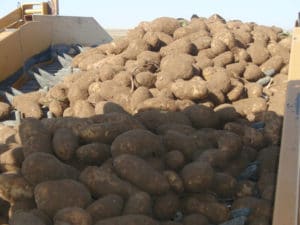Forget what you know about soil science. Foliar feeding is a wholly different way of getting plants the nutrients they need to thrive.
In the 1950’s Tukey and Wittwer used radioisotopes to confirm that nutrients applied to the foliage are absorbed and transported to other plant parts. They even demonstrated that there are differences in speed of uptake and transport of various nutrients. This was exciting, because growers and researchers had observed that plants responded to nutrient sprays applied to leaves and stems, but didn’t really know if the nutrients were entering plants directly through foliage, or if nutrients were simply washed into the soil and drawn into the plants through the roots.
Now, 60 years after this finding, many agricultural producers frequently use foliar nutrition to influence a plant’s reproductive and vegetative growth and correct imbalances – but not everyone. While some praise the results; some growers are still not sure if foliar feeding is economical, or if it even works.
Why?
Not all foliar nutrient products are the same. As a flood of nutrient products became available to growers, some did not perform well, leading to an unfortunate generalization that all foliar nutrients are “snake oil” remedies. Just because nutrients can be absorbed through the foliage, doesn’t mean all nutrient products are equally as effective.
We have to understand how nutrients are absorbed to design effective nutrient products.

The mechanism by which plants create the “pull” of water from the soil and into the plant starts with water evaporating from surfaces in the plant structures, primarily the leaves. This is known as transpiration. Most of this happens inside the leaf structures and is regulated by the plants control over the stomatal openings on the leaf surface. However, some fraction of water evaporates directly from the outer epidermis and woody parts of the plants.
When a spray solution containing soluble compounds contacts the transpiring water on a plant surface, it can create the conditions for the compounds to diffuse from the surface into the leaf through the channels that water was evaporating from. Significantly, this chemical diffusion process is largely passive; the plants cannot control how much of the compound is absorbed. If the concentration is too high, it can overwhelm the leaf cells and become locally toxic – the consequences are visible as spray burn.
Choosing the right nutrient chemistries is also important. Plants naturally use the “ionic” forms of nutrients as the building blocks of all the various compounds they produce as part of their growing and reproductive cycles; this is how most of the nutrients are taken in from the soil. Different companies have marketed various products that either supply the nutrients in the “ionic” forms, or as chelated or complexed nutrient formulas and have made various claims about safety and efficacy. As they say, “the proof is in the pudding”, and unfortunately, many products have underperformed leaving growers with “snake oil” impressions.
An additional challenge is that plants protect themselves with natural barriers that can limit any foliar applied material from contacting the transpiring water. The waxy coatings on plant surfaces and other natural structures can greatly impact the efficacy of an applied product’s absorption and translocation within the plant. Products can be added to sprays to adhere or penetrate these barriers, but too much of these compounds can injure the leaf tissue causing the plant to become less productive.
So, how do you make a foliar nutrient product that works reliably?
After years of research and development, Nutrient TECH’ founder Dr. Les McNall created a novel set of nutrient products that provide a great balance between safety and efficacy – the TECH-FLO nutrient products.

Nutrients applied to potato leaves in WA
These products are liquid suspensions of limited solubility nutrient compounds that have been ground to extremely small size (<5 microns) to maximize coverage on the leaf surface. The nutrient compounds dissolve into the ionic forms of the nutrients on the leaf surface where they create a solution that diffuses into the plant at a more controlled rate. As the soluble nutrients diffuse in, more dissolve from the particles to continue to feed the plant. This controlled release feature allows greater amounts of nutrients to be applied with a reduced risk of spray burn.
In addition, the TECH-FLO products include POLYSORBYGEN, a set of additives that help the particles disperse well, stick to the leaf surface, remain rain-fast, assist in drawing moisture to the particles, and also assist in the translocation of the nutrients in the plants. POLYSORBYGEN also helps the TECH-FLO products be compatible with other spray materials like fungicides and pesticides, reducing growers spray expenses.

Harvest of TECH-FLO treated potatoes
As an agricultural producer looking to correct a deficiency, influence bud break or increase sugar content, it makes the most sense to use products that are safe, work fast, and can supply enough nutrients to make a difference – and work time after time. That is what TECH-FLO products can do for you.
Contact your PCA, local fertilizer supplier, or our Sales team to find out how easy it is to include TECH-FLO products in your nutrition programs.


